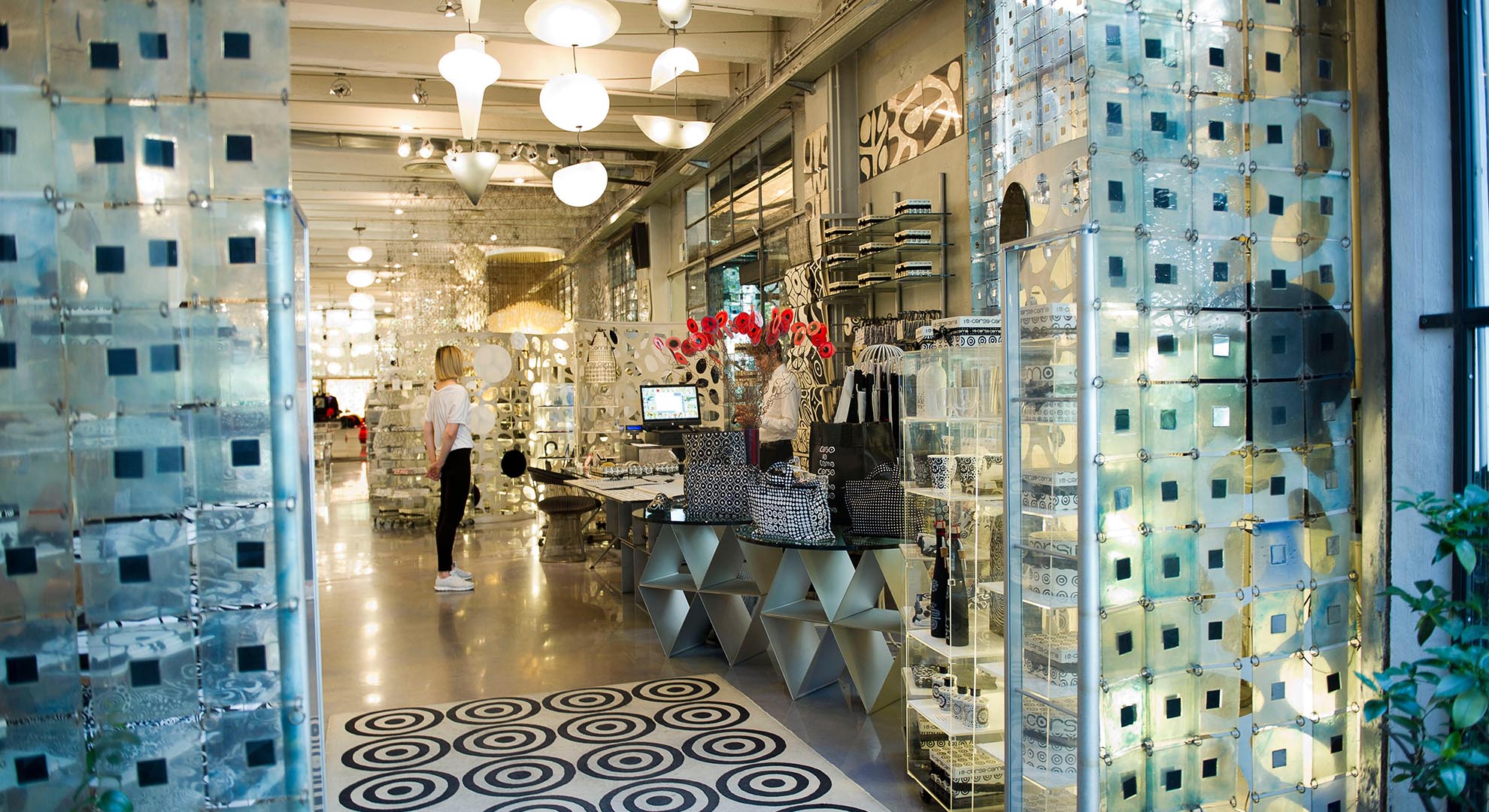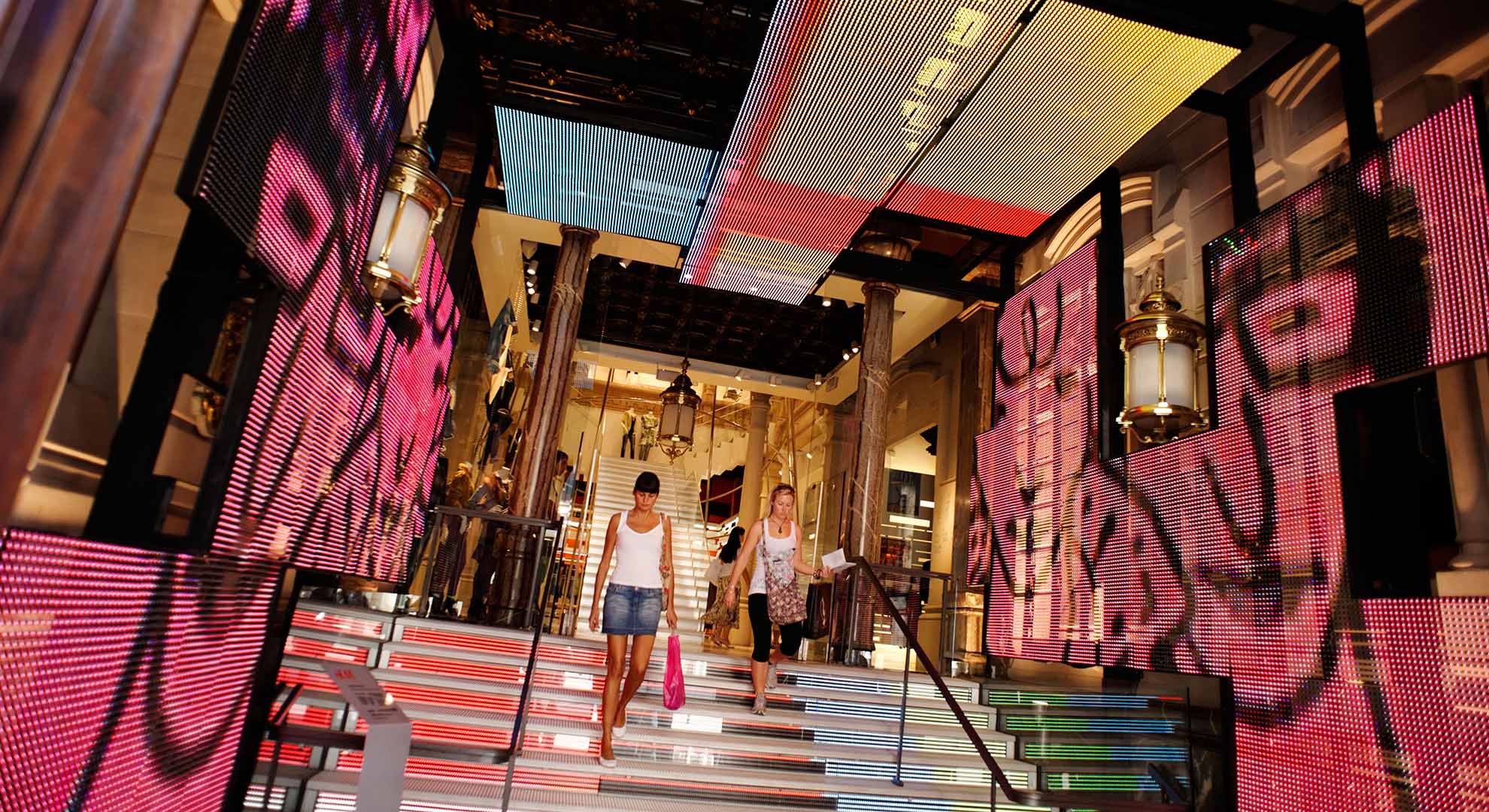The Future of the Brand Experience
The challenge of engaging customers both online and off
We live in a technological and digitised society, in which the options that the Internet offers us are unlimited. The way we connect with others and with our environment has changed at breakneck speed, and as a result, so have consumer habits.
Electronic commerce (ecommerce) grows significantly year after year. Take China for example, where 73% of consumers buy something online at least once a week. China is followed by the UK, Germany, Italy, France and the USA. In countries like Spain, where consumers still prefer physical shops, online shopping is growing rapidly as people start to put their faith in online transactions.
When Amazon – one of the first ecommerce companies – was launched in 1994, no one imagined that it would be making $117,900 million in 2017. That’s 30.8% up from the year before, showing that ecommerce is both booming and rapidly increasing.
Nevertheless, people enjoy physical contact. They need to see and touch products and understand shopping as a leisure activity. That’s why people continue to shop in-store, guaranteeing that traditional commerce sticks around. But brands do need to reinvent themselves. To be able to compete with the ecommerce market, brands need to find a way to create different brand experiences at the point of sale.

Corso Como in Milan. A referential concept store experience. Alamy stock photo.
According to Angela Ahrendts, Senior VP of Retail at Apple: “the shop is now the biggest product that we produce”. Physical spaces must adapt to provide clients with something that they can’t find in a virtual shop. This is not a new concept. It’s been some years since the arrival of the concept store – an exclusive space with very elaborate decor, where fashion, art, architecture, catering and design coexist. It’s a chance for businesses to set themselves apart from traditional shops. Concept stores can be seen more and more in cities, aiming to engage the consumer in a very visual and captivating way.
However, the aesthetics of these spaces aren’t enough to reach the consumer nowadays. The consumer wants different, exciting and memorable shopping experiences, and brands need to satisfy these needs. Success lies in creating brand experiences – and not just for shopping. The process needs to be understood in its entirety – from the moment the consumer decides to purchase up to when the order is received, as well as post sale. Shopping experiences are unique: brand experiences influence the emotions and feelings of the consumer, creating long-lasting links that help consumers make decisions at the point of sale.
The digital sphere can make brand experiences more difficult to achieve, but it can also be a great ally in creating experiences at the point of sale.
Take Ralph Lauren for instance. In collaboration with startup Oak Labs, it introduced smart mirrors in its 5th Avenue shop in New York. These mirrors allow the viewer to choose sizes, colours, languages and even have styles recommended. And in April of 2018, Zara launched an augmented reality app that allowed shoppers to interact with the shop window displays. In this case, the trial run was unsuccessful and the app was removed a month later. Nevertheless, it showed the brand’s interest in fostering customer loyalty through innovation.

Entrance to H&M store in Barcelona, designed by Javier Mariscal. Alamy stock photo.
The Inditex group explores different tools for creating links with its brands. Who doesn’t recognise a Massimo Dutti clothing shop just from its scent? Sensory marketing has been a trend for a long time, not only through smells. Bershka plays loud electronic music to appeal to the younger crowd. H&M has installed large LED screens in shops for a big visual impact. All of these are examples of the hunt for solutions that set brands apart and capture the attention of consumers.
Nowadays, interior design proposals, unique ways of interacting with products and the use of technology and sensory elements have given way to diverse initiatives that create activities for brand users to participate in new brand experiences. Concerts, food tasting experiences, workshops, meetings, debates…people need to feel like they are part of a community, and brands have become large communities for diverse audiences. People who share interests, hobbies or lifestyle choices can identify with brands that have similar values to their own, and get involved with them.
The sports clothing brand, Lululemon has managed to create a community around the brand itself. It does so via the Internet, by accessing specific content or invitations to global events. Additionally, its flagship shop in New York offers fitness and yoga classes, where shoppers can try on their purchases. There is also a selection of events directed at an audience with common interests, focused around a healthy lifestyle.
In short, the future of trade is open, the options are endless and the brands that understand the customer and create content and brand experiences worthy of being shared and not forgotten will have an edge on the rest.
Main Image: Apple Store in Dubai. Alamy stock photo.
